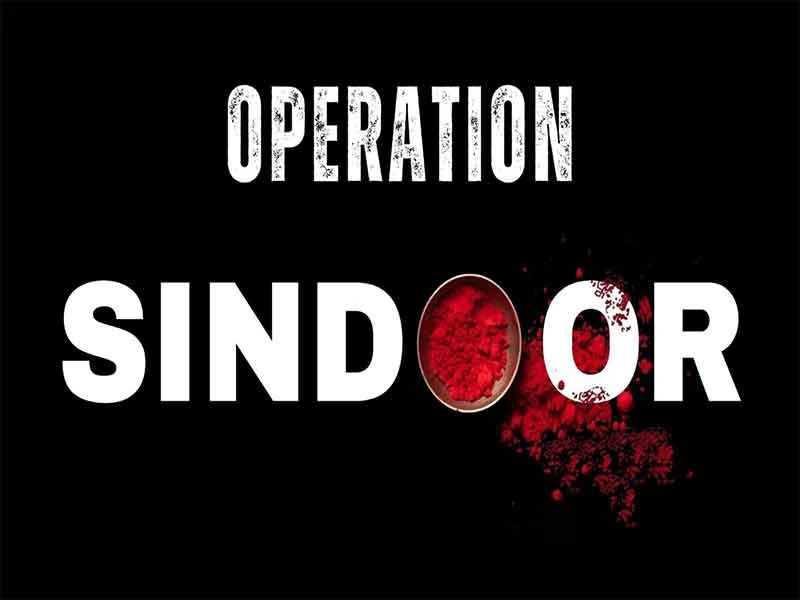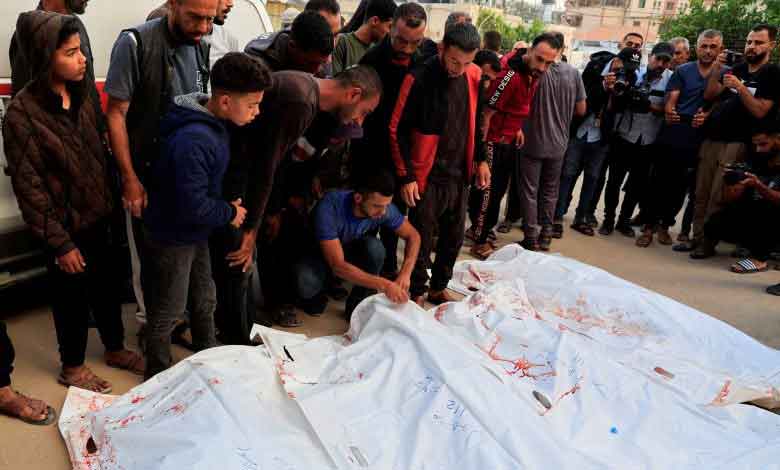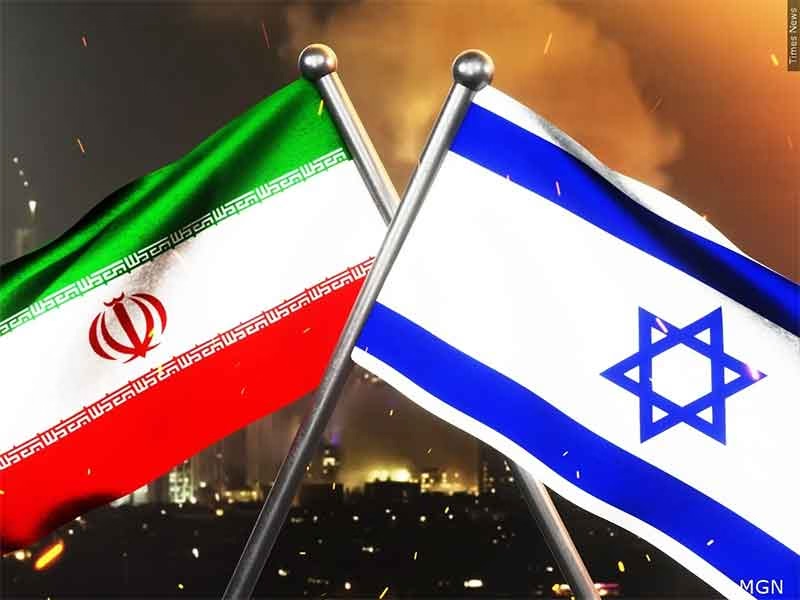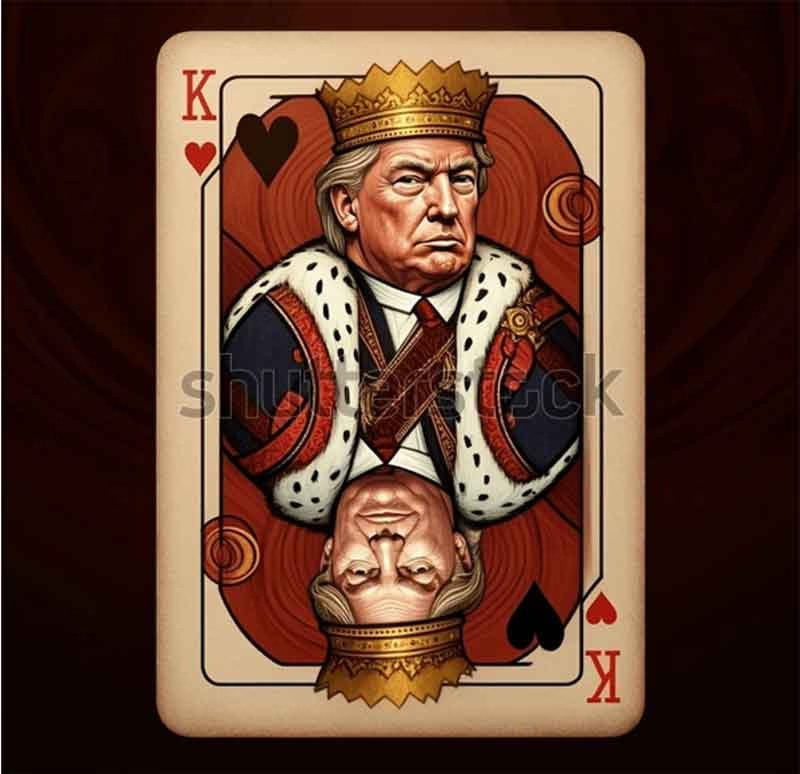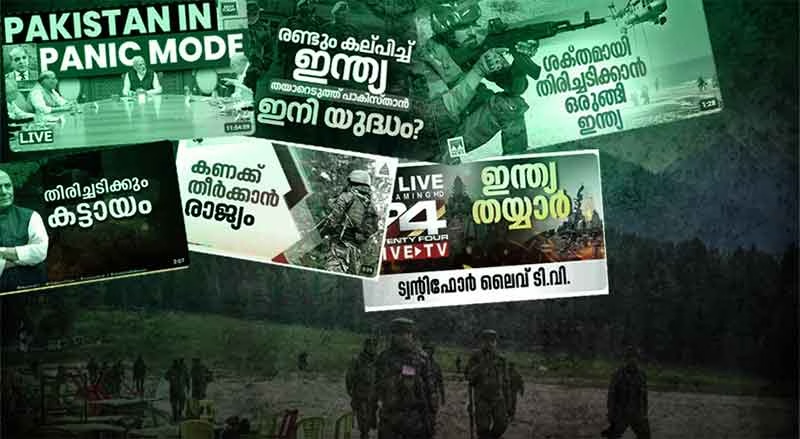
Twenty-six precious lives were lost when a group of terrorists opened fire in the beautiful Baisaran Valley of Pahalgam on April 22. What remains are the anguish and nightmares of the loved ones left behind. As T.S. Eliot wrote, “April is the cruelest month,” the loved ones of the victims will remember this for the rest of their lives. It may take days for the ordinary people of the valley to recover from the horror of the attack. No humanist can agree with the killers, regardless of the ideology they claim. History shows that armed conflict has only ever yielded destruction.
The impact of that devastating act was compounded by the hate campaign waged by major Indian media outlets and social media groups after the attack. India Today reported that “terrorists killed innocent Indian Hindus”. This is unsurprising to any citizen aware of the national media’s state-servility and right-wing leanings. It is not new that these tones have spread to regional outlets, including Malayalam media. When hate and communal politics take hold, people still expect the media to handle such situations responsibly. However, the majority of the press have proven otherwise. Even Malayalam media competed to demonstrate their ‘media responsibility’ through news reports and discussions so reprehensible that anyone with common sense would feel disgusted and concerned. It is not merely a few journalists or media institutions who are responsible; our society at large bears some blame as well.
It is a reality that while mass killings, accidental deaths, and murders cause pain and separation for some, they provide stimulation, curiosity, and a break from daily boredom for others. The selfies and reels circulated during such disasters are a testament to this, but this is not a new insensitivity born of modern technology.
In 1990, during the Iraq-Kuwait war, only Doordarshan was available in Kerala, and television sets were rare. Nightly broadcasts featured repeated war footage. People would gather eagerly at these homes, waiting for any new visuals, paying little attention to the news itself. Despite the horrific images, the enthusiasm was as carefree as the enjoyment of the Ramayana and Mahabharata serials. It reminded me of humanity’s longstanding tendency toward spectacle, one that long predates digitalization.
Visual media have advantages that the print medium does not. It can tame and influence our senses more effectively. With technologies like AI and augmented reality, it can now create even greater visual marvels. However, when the media abandons its ethical duties, concern and intervention become necessary, especially when infotainment dilutes even disaster coverage. The body language and verbal exercises of Malayalam news anchors in recent days, competing with the national Godi media, exemplified this decline. One well-known “Intro King” of night talk shows on Malayalam news channels was seen shouting abusively on-air, to the point you would wonder if he’d leap off the screen! Most other anchors mirrored this emotional outburst, calling for revenge and displaying palpable patriotism, moral outrage, and unconditional support for the Modi government. They analyzed how quickly the Indian Army could “reduce Pakistan to ashes,” glorifying weaponry and igniting audience hysteria. It was as if actor Suresh Gopi’s character Nandagopal from the Malayalam movie Patram had come alive in our newsrooms. The essence is that Arnab Goswami’s ‘Godi media’ spirit is now haunting the newsrooms of Kerala as well.
Wisdom and Questions Beyond Emotion
Senior journalist and former editor of The Telegraph, R. Rajagopal, reacted to the media coverage as follows: “The Hindu newspaper, which reported events objectively, faced uncommon criticism. S. Gurumurthy commented on The Hindu, possibly because it gave more prominence to Pakistan’s actions than to Prime Minister Narendra Modi’s speech, saying: ‘Does it not seem like the headlines of the Dawn edition in Islamabad’. In response, Malini Parthasarathy, a member of the board of directors of The Hindu, wrote on Twitter: ‘Distressed with this unpatriotic & insensitive layout by our editorial team. As a Director of The Hindu Group, I regret that our readers who have held our brand in high regard for more than a century are seeing their favourite paper reduced to this. At a critical time when the national interest is at stake & its defence is paramount, it’s imperative that we, the media play a constructive role.
Praying for the revival of our great heritage brand!’
The way several television channels covered the terrorist attack, and Malini Parthasarathy comments, is evidence of how much the media has changed in India. Rajagopal concluded: ‘If anyone thinks that such media and this mindset can ask tough questions to the government responsible for ensuring security, that is fallacy.'”
At a public event recently, former Telegraph editor R. Rajagopal asked a Kerala-based TV anchor whether his channel had done any special report analyzing the deeper issues. The anchor replied vaguely that the topic had been “discussed.” It was clear he hadn’t understood the question at all. Media work has drifted so far from its real duties that many journalists no longer know where they stand. The superficial, fabricated world of Malayalam media today deserves serious study.
Following the Pahalgam attack, the media should have raised several critical questions, particularly in light of former J&K Governor Satya Pal Malik’s revelations about the Modi government’s failures in the 2019 Pulwama attack. Instead, amidst emotionally charged narratives, important questions were hidden, and religious hatred was fanned.
Where were the promises that abrogating Article 370 and removing Kashmir’s special status would eliminate terrorism? What became of the claim that demonetization would cripple terrorist financing? Economist Parakala Prabhakaran has pointed out that while Modi and Shah are experts at election management and post-election horse-trading, their grasp of national security and governance is poor.
Why wasn’t the national media — or even the Malayalam media — amplifying the question raised to Union Minister C. R. Patil by the wife of Shailesh Bhai, a terror attack victim: “Didn’t you arrange security when you came here? Is security reserved only for VIPs?” Are the lives of taxpayers worthless? Why wasn’t the voice of the sister of slain Navy officer Vinay Nehwal heard when she asked the Haryana Chief Minister: “Why did it take an hour and a half to provide rescue assistance even though my brother was attacked? Where were the police? The army? Where were the facilities for first aid?”
Tourists had started arriving in April, yet there were no security measures in the Baisaran Valley—an area inaccessible to vehicles. Without any security arrangements, can we even call it a “lapse”? Retired Major General GD Bakshi angrily highlighted cuts to security budgets and recruitment post-COVID on Republic TV. While Modi addressed election rallies, he skipped the all-party meeting on the terror attack. The vulgar spectacle of Modi — who gave an emotional speech in his usual style — laughing and joking on stage with his ally Nitish Kumar during a public meeting in Madhubani, Bihar, did not provoke anger among most journalists, except for a few like Ravish Kumar. Even Parliamentary Affairs Minister Kiren Rijiju admitted that there were remarks about intelligence failures during the all-party meeting. Yet, the mainstream media showed little interest in discussing the serious issues of intelligence lapses and security failures.
When the bodies of the victims were brought to Delhi, no one seemed to find anything improper in the usual display of power, with a red carpet laid out along the path Home Minister Amit Shah walked to pay his respects.
During previous regimes, Home Ministers like Shivraj Patil resigned after terror attacks, taking moral responsibility. In the Modi era, the very idea of accountability has vanished. The media today doesn’t scrutinize terrorist attacks with the same rigor it once did.
Meanwhile, every day, people are dying in Manipur, but the media that stays silent there stokes hatred when it comes to Muslim communities. Alongside national outlets like Zee News, Times Now, Republic TV, and India Today, Malayalam media too have adopted the “Godi” approach—patriotism without questioning the government.
On Tuesday, the BJP’s Chhattisgarh Twitter handle circulated an AI-generated image of a murdered man with the caption, “Asked about religion, not caste.” The narrative that the killing was religiously motivated gained traction. Malayalam media failed to counter this sectarianism. No outlet prominently reported that local Muslims rushed to aid the victims, or that Syed Adil Hussain Shah was shot dead while trying to protect the tourists. CNN-18 falsely claimed that Kashmiris were responding to terrorism “for the first time,” when they protested againt the terror attack erasing decades of anti-terror activism by ordinary Kashmiris.
If it were not for the participation and support of Kashmiris in the peace process during the period from 2002 to 2013, the number of lives lost to terrorism would not have declined so significantly from 2002 to the present. The fact remainst that Kashmiris largely remained indifferent when the Modi government revoked the special status of Jammu and Kashmir in 2019. Reports now indicate that around 1,500 people have been placed under preventive detention in Kashmir. Yet, no major media outlet is asking why this is happening. Kashmiri students are being attacked in many parts of the country, and instead of working to stop the hate campaign, the media has been complicit in fueling it.
Subscribe to Our Newsletter
Get the latest CounterCurrents updates delivered straight to your inbox.
The Nation as an Imagined Community
Those spreading hatred in the name of patriotism should read Benedict Anderson’s Imagined Communities (1983). Anderson reminds us that nations are imagined social constructs—members will never meet most of their fellow citizens. “Print capitalism” was a major driver of nationalism by making people feel connected through shared reading experiences. Today, visual media, instead of building solidarity, are deepening divisions at the behest of global capitalism.
Ordinary people in Pakistan are not responsible for the acts of terrorist groups. Calls for war and revenge will only hurt the common folk. Wars benefit arms industries and capitalist powers seeking to control resources like oil, minerals, and land. Leaders like Modi can use war to suppress dissent in the name of “national security” and implement the Sangh Parivar’s agenda more aggressively.
We must remember: war cries are cries for more suffering.
The article was originally published at keraleeyammasikakeraleeyammaskika
A K Shiburaj is the editor of Panthi.in



